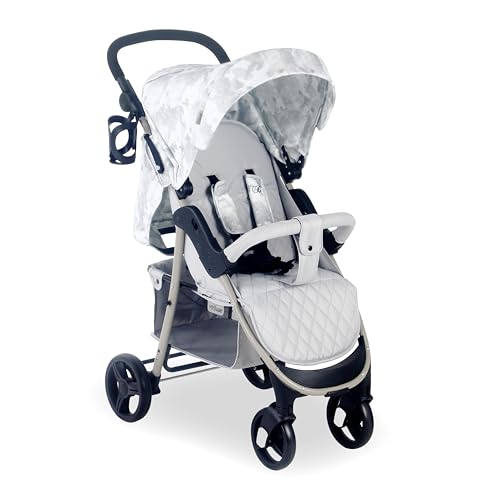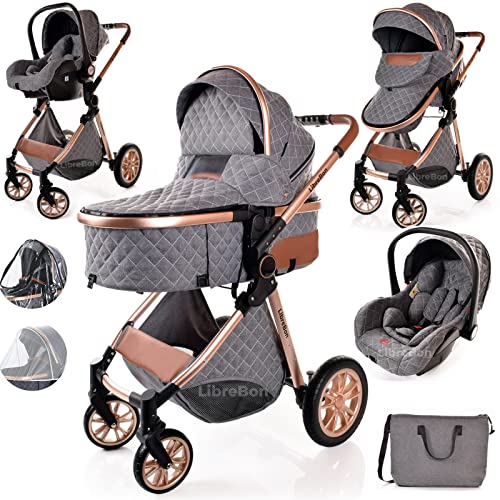Why Pram Vs Pushchair Is The Next Big Obsession
페이지 정보
작성자 Irish 작성일25-09-11 02:03 조회2회 댓글0건본문
Pram vs. Pushchair: Understanding the Key Differences
When it pertains to transferring infants push Chairs and prams children, moms and dads typically discover themselves overwhelmed by the numerous alternatives readily available. Amongst these alternatives, prams and pushchairs are 2 of the most typical types of baby transportation. While the terms are typically used interchangeably, each has unique features and benefits that deal with varied parenting needs. In this article, we will check out the basic distinctions in between prams and pushchairs, assisting parents make informed decisions about which is best pushchair matched for their household.
What is a Pram?
A pram, or perambulator, is a kind of baby carriage developed primarily for newborns and babies. Prams usually include a totally flat lying position, which is essential for newborns who require to lie flat for spine advancement. Many prams come geared up with a deep, enclosed body that supplies a relaxing and safe and secure environment for the baby, often with additional functions such as hoods or covers to protect them from the aspects.
Key Characteristics of Prams:
- Flat Lying Position: Supports healthy spinal advancement in newborns.
- Confined Design: Protects the baby from wind and sunlight.
- Conventional Aesthetic: Often made from materials like wicker or material, giving a classic look.
- Weight and Bulkiness: Generally heavier and bulkier than pushchairs.
What is a Pushchair?
A pushchair, also referred to as a stroller or buggy, is designed for older infants and toddlers who can stay up unassisted. Pushchairs enable several seating positions, consisting of reclining options for naptime. They are normally lighter and more nimble than prams, enabling parents to browse hectic locations with ease. Lots of pushchairs best feature adjustable handles, storage compartments, and can frequently be folded for hassle-free transport.
Secret Characteristics of Pushchairs:
- Seating Position: Designed for kids who can stay up, with numerous reclining positions.
- Light-weight and Compact: Easier to maneuver and transportation.
- Versatility: Many models are convertibles or can accommodate cars and truck seats.
- Storage Features: Often consist of baskets for bring diaper bags, toys, and so on.
Key Differences Between Prams and Pushchairs
Below is a relative table highlighting the crucial differences in between prams and pushchairs.

| Feature | Pram | Pushchair |
|---|---|---|
| Target Age | Newborns to 6 months (flat position required) | 6 months to toddler age (sitting unassisted) |
| Design | Confined, conventional design | Open, contemporary design |
| Weight | Much heavier, bulkier | Lighter, more compact |
| Seating Options | Flat just | Multiple positions including reclining |
| Manoeuvrability | Less maneuverable due to weight | Highly maneuverable |
| Storage Space | Minimal | Generous underneath baskets |
Choosing Between a Pram and a Pushchair
Consideration Factors:
- Age of the Child: Choose a pram for newborns and a pushchair for older infants and young children.
- Intended Use: If you prepare to do a great deal of walking or browsing city streets, consider a design that matches your lifestyle.
- Space: Assess the offered storage in your home or car and how compactly a model can fold.
- Spending plan: Consider the rate range, as prams twin and pushchairs can differ commonly in cost.
- Features: Look for additional functions that may be helpful for your everyday life, such as cup holders, canopies, or simple folding mechanisms.
Advantages and Disadvantages
Benefits of Prams
- Suitable for Newborns: Encourages healthy spine advancement.
- Comfortable Space: Provides a comfortable environment for babies.
Downsides of Prams
- Weight: Heavier and bulkier, making them less practical for daily use.
- Restricted Use Time: Generally useful just for the first six months.
Benefits of Pushchairs
- Versatility: Suitable for longer periods as the kid grows.
- Light-weight Design: Easier to carry and navigate.
Drawbacks of Pushchairs
- Not Suitable for Newborns: Requires the child to be able to sit up unassisted.
- Less Protective: Generally more exposed than a pram.
Often Asked Questions (FAQs)
1. Can I use a pushchair for a newborn?
The majority of pushchairs are not developed for newborns; however, many designs come with infant safety seat adapters. Some pushchairs use a totally reclining seat alternative that may be suitable for infants, but ensure the maker validates it's safe.
2. Which is much better for travel?
Pushchairs are normally chosen for travel due to their lightweight and compact nature. They can frequently be folded easily for transport on public transportation and fit more readily in vehicle trunks.
3. The length of time can I utilize a pram?
Prams are usually appropriate for babies until they reach around 6 months of age or when they can support themselves in a seated position.
4. Exist hybrid models readily available?
Yes, lots of producers produce hybrid designs that can be converted from a pram to a pushchair depending upon the child's advancement phase.

5. What should I search for when buying a pram or pushchair?
When purchasing, consider safety functions, ease of use, toughness, weight, and storage. It's also recommended to test different designs for convenience before making a decision.
Picking between a pram pushchair and a pushchair eventually depends upon the age of your child and your way of life preferences. Comprehending their distinctions assists moms and dads make informed options that cater to their family's needs. Parents can enjoy the journey of being a parent by ensuring that their child's convenience and safety are constantly focused on, while likewise considering their own benefit and design.
댓글목록
등록된 댓글이 없습니다.

